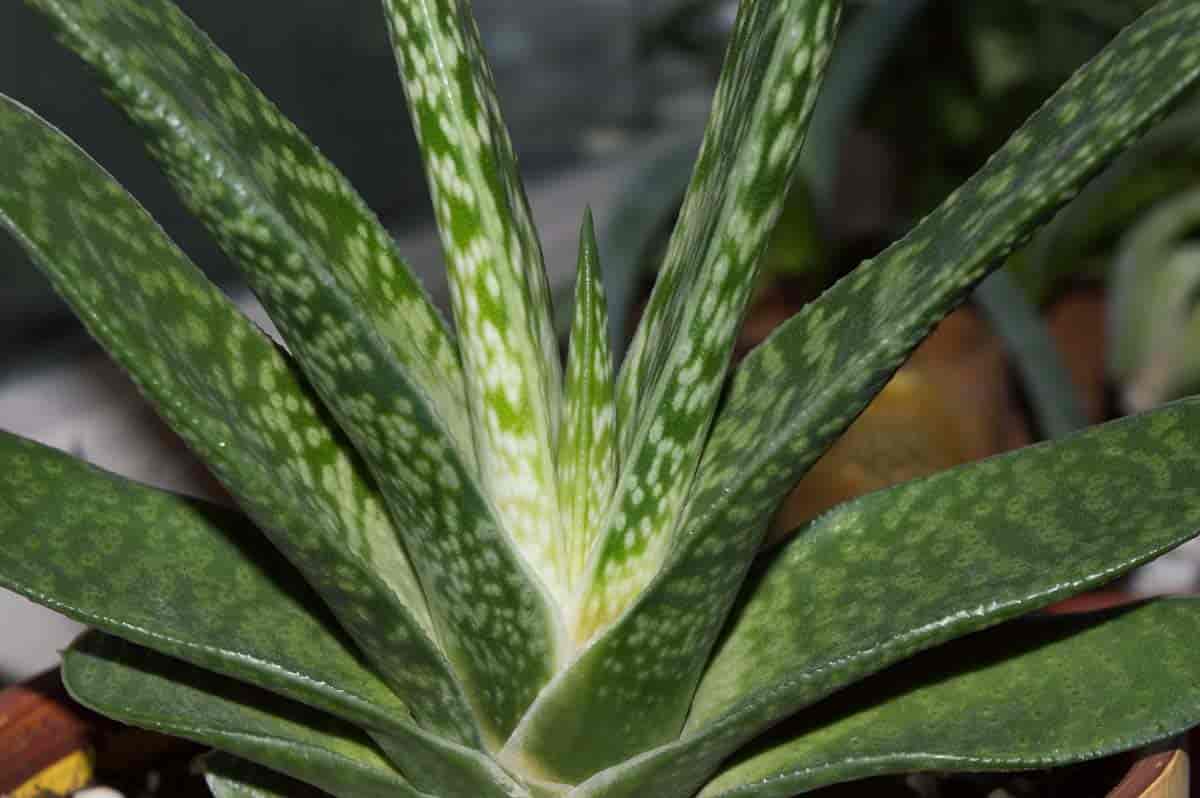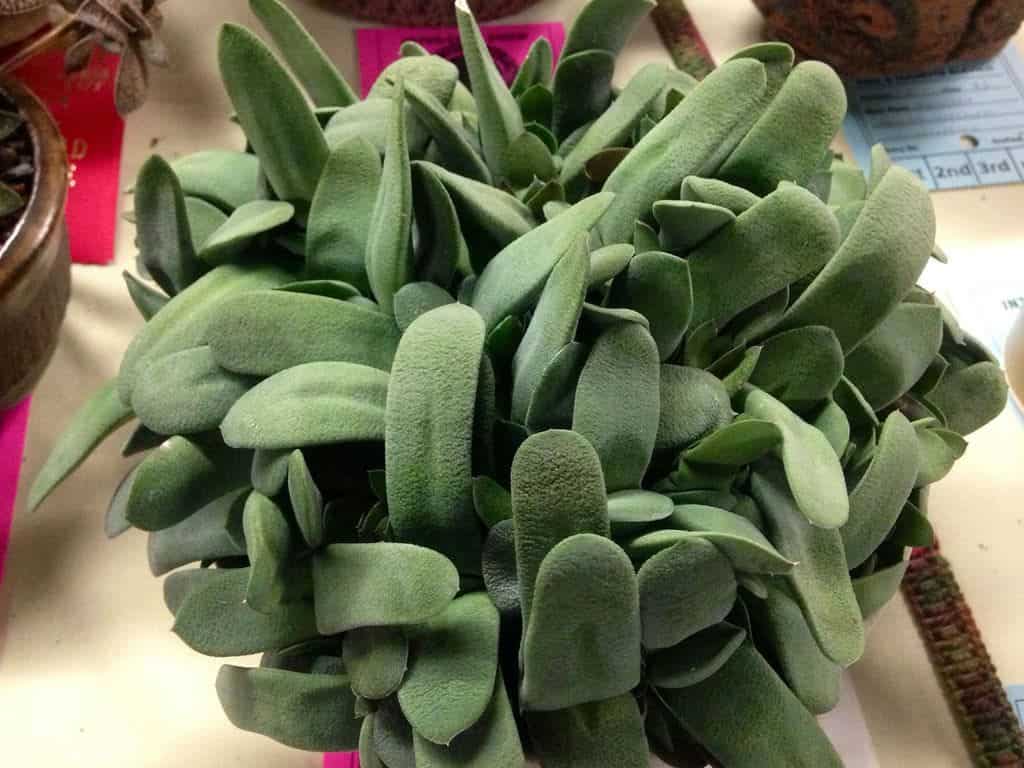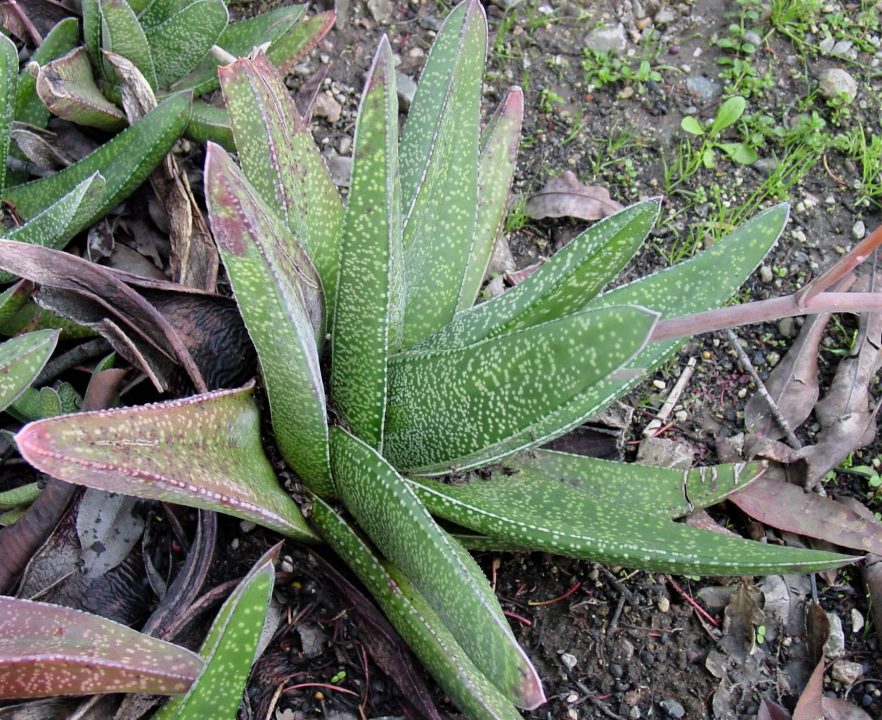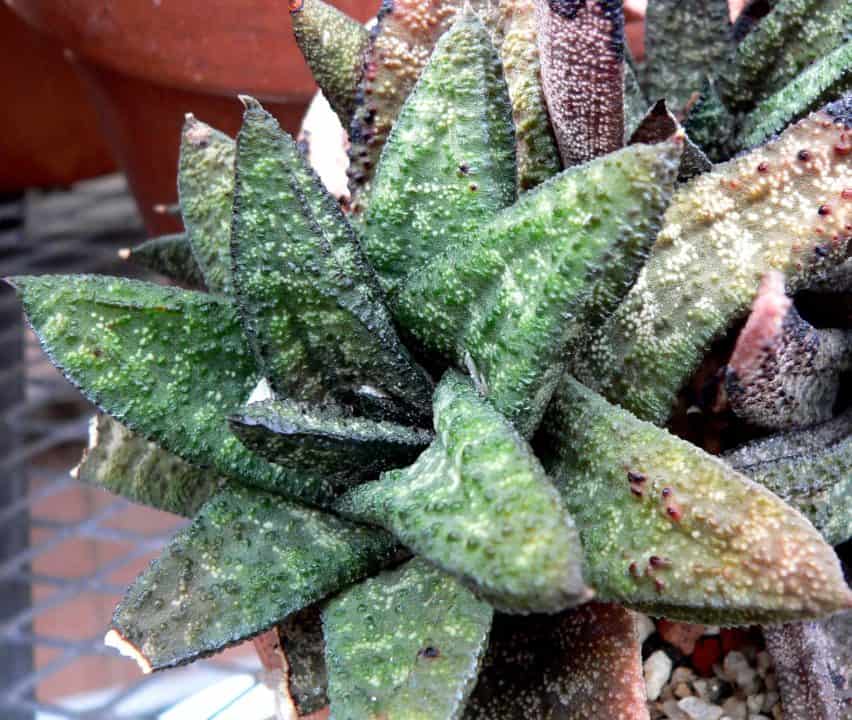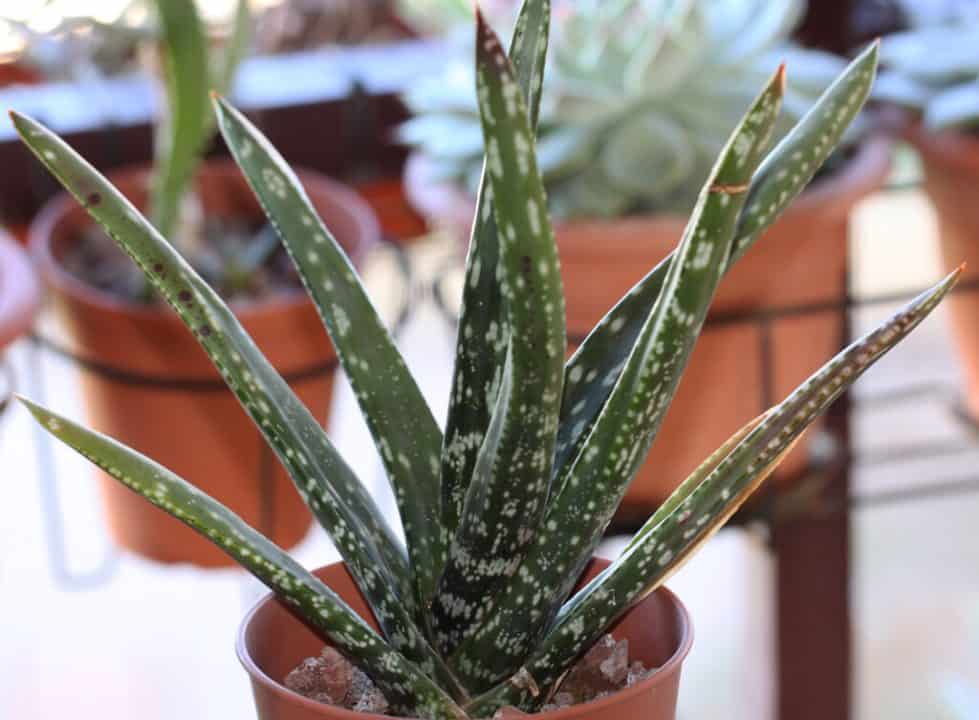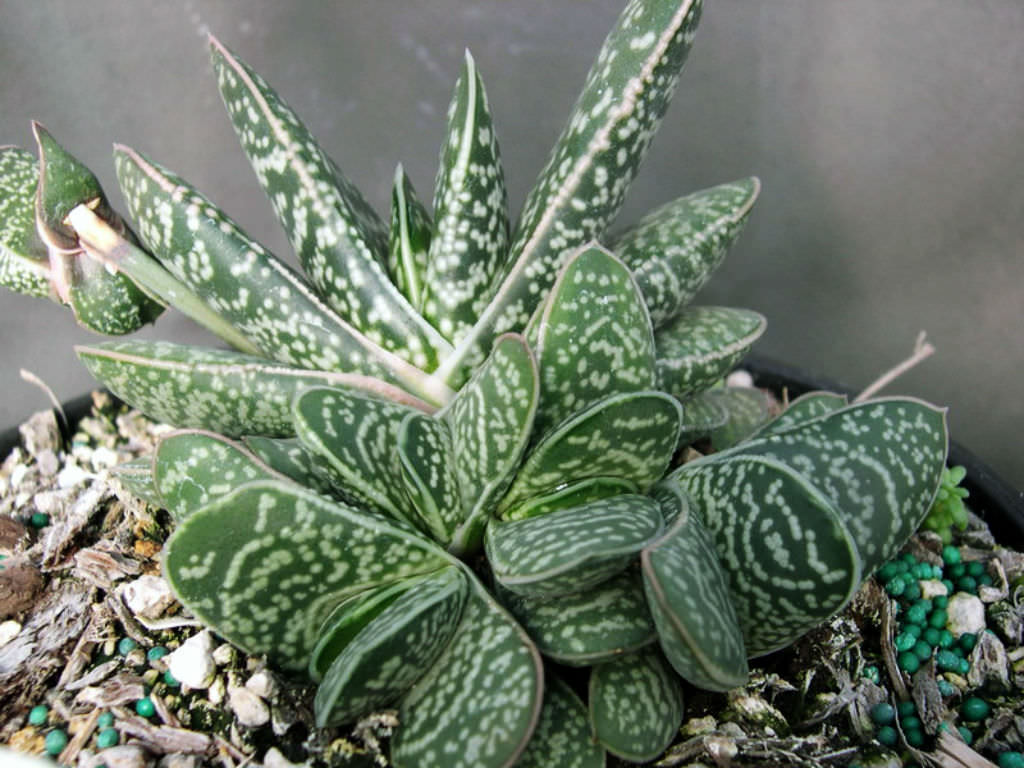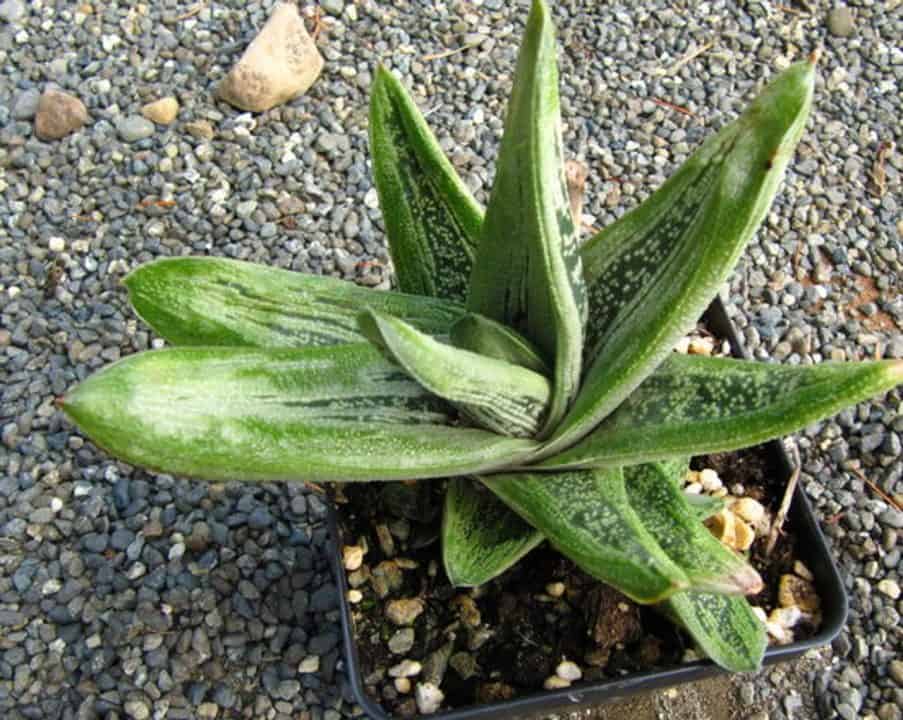Gasteria fuscopunctata is an easy-to-grow succulent that looks like something out of Dr. Seuss’s garden. This plant has no trouble growing and thriving in small spaces, so it makes a great starter plant for people just getting into gardening or who have limited space at home or work.
When you first get your gasteria fuscopunctata, it’s important to set up their new environment carefully to make sure they remain healthy over the long term.
Follow these steps and tips to give your plant the best chance of survival, and to help it thrive as much as possible.
Origin and distribution
Gasteria fuscopunctata is a perennial succulent native to South Africa. It has long, dark green leaves with white spots and grows up to 18 inches tall. The plant does best in dry, warm climates and can be propagated by stem cuttings or by seed.
Keep your gasteria outside in a spot that receives full sun most of the day; it will not tolerate shade. When grown indoors, keep the soil barely moist and fertilize sparingly every two weeks.
Gasteria fuscopunctata propagation
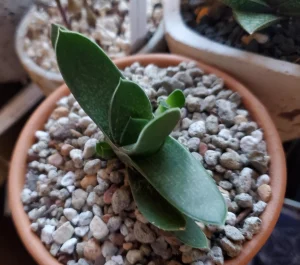
Gasteria fuscopunctata is a beautiful, low-maintenance succulent that is perfect for beginners. These plants can be propagated by seeds or offsets. When propagating by offsets, make sure to allow the cuttings to callous over for a few days before planting. To care for your Gasteria fuscopunctata, give it bright indirect light and well-draining soil.
Allow the soil to dry out completely between waterings. Gasteria fuscopunctata thrives in temperatures of 70 degrees Fahrenheit (21 degrees Celsius) during the day and 55 degrees Fahrenheit (13 degrees Celsius) at night. However, these plants are capable of surviving warmer and cooler temperatures with varying degrees of success.
They should not be exposed to extreme cold. Gasteria fuscopunctata does not need any special fertilizer requirements beyond what comes with its potting mix when first planted in its container.
Once established, this plant does not require any extra fertilizing. If you do want to fertilize your Gasteria fuscopunctata, use only organic fertilizers like fish emulsion and compost tea because they are safer for the environment than chemical fertilizers like Miracle Grow.
Gasteria fuscopunctata care information
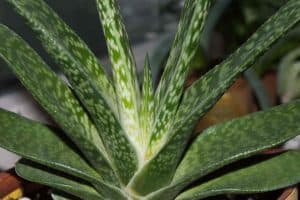
When it comes to caring for your Gasteria fuscopunctata, there are a few things to keep in mind. This plant is native to South Africa, so it does best in warm, dry climates. It’s also tolerant of drought, so don’t worry if you forget to water it occasionally.
Just make sure to give it a good soaking when you do water it. The Gasteria fuscopunctata also likes bright light, but can tolerate some shade.
Light requirement
This Gasteria can tolerate a wide range of light conditions from full sun to partial shade. However, it will do best in bright, indirect light. If the light is too low, the leaves will become etiolated (stretched out). If the light is too high, the leaves will develop brown spots. So, finding a happy medium is key to success with this plant.
Soil/potting mix
Gasteria fuscopunctata is a succulent that grows in rocky, well-drained soil. It is tolerant of a wide range of soils, including sand, loam, and clay. The ideal potting mix for this plant would be one that is light and airy, with good drainage.
A cactus or succulent mix would be a good option. It’s important to use the right type of soil because it can affect how the gasteria grows over time. For example, if you use a container with too much water retention, the roots will suffocate and rot which can lead to root rot. Make sure you use enough water while the plant is growing to keep it moist but not wet.
Watering
Water your Gasteria fuscopunctata about once a week, or when the soil begins to dry out. Be careful not to overwater, as this can lead to root rot. Allow the water to drain completely after each watering. You may also wish to mist the leaves with water occasionally.
Fertilizer
To keep your Gasteria fuscopunctata healthy and looking its best, be sure to fertilize it regularly. A good rule of thumb is to fertilize once a month during the growing season and every other month during the winter.
When choosing a fertilizer, look for one that is high in phosphorus and low in nitrogen. Apply the fertilizer around the base of the plant, being careful not to get any on the leaves. Water the plant well after applying fertilizer. You may also want to use a time-release fertilizer as this will provide nutrients over an extended period of time.
Keep in mind that you will need to water more often if you use a time-release fertilizer. For container plants, you may need to transplant into larger containers as they grow; potting soil mixes with additional perlite or vermiculite will help avoid problems with root rot.
Gasteria fuscopunctata is tolerant of many different types of fertilizers; however, liquid fertilizers tend to work best because they are more easily absorbed by the plant’s roots. Try using a product such as Miracle-Gro® Indoor Plant Food every two weeks during periods of active growth.
Temperature
One important thing to know about caring for Gasteria fuscopunctata is temperature. This plant prefers warm weather and will suffer in cold temperatures. If you live in an area with cold winters, it’s best to grow Gasteria fuscopunctata indoors.
The ideal temperature range for this plant is between 65 and 80 degrees Fahrenheit. If the temperature drops below 50 degrees, the leaves of the plant will start to turn brown and wilt.
When the temperature rises above 90 degrees, it may be time to move your plant outside into partial shade or shelter from direct sunlight. Keep in mind that when you move your plant outside or bring it back inside after being outside, make sure that you give the roots a few days to adjust before changing the temperature again.
Humidity
One of the most important things to remember when caring for your Gasteria fuscopunctata is to maintain high humidity levels. This can be done by misting the leaves regularly, using a pebble tray, or by growing it in a terrarium. If the air is too dry, the leaves will start to shrivel and brown.
The ideal humidity range is 40-80%. Misting should happen once per day or at least every other day. It’s best to avoid placing plants near heating vents, which can cause them to dry out easily. It’s also important not to let water sit on the leaves of the plant; this could cause fungal infections that are difficult to treat.
Pruning
As with most succulents, Gasteria fuscopunctata does not require much pruning. You can remove any dead or dying leaves, as well as any that are significantly damaged. If you want to encourage fuller growth, you can trim back the tips of the leaves. Just be sure to use a sharp knife or scissors so you don’t damage the plant.
Don’t do this too often, but once every few months should be enough. When handling your plants make sure to wash your hands first, as bacteria from your hands could cause infection on the plant.
When to repot
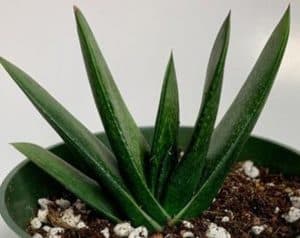
If your Gasteria fuscopunctata is looking cramped in its pot or has stopped growing, it may be time to repot. Be sure to choose a pot that is only slightly larger than the current one, as this plant does not like a lot of root space. Water well after repotting and do not fertilize for at least a month. New growth should appear within a few weeks.
Dormancy/Winter rest
Gasteria fuscopunctata goes dormant in winter, so don’t be alarmed if your plant doesn’t seem to be growing during this time. The best way to care for your plant during dormancy is to reduce watering, but make sure the soil doesn’t dry out completely.
You can also move your plant to a cooler location if you think it will benefit from the lower temperatures. Just remember that they need light while they are dormant.
Gasteria fuscopunctata flower & fragrance
The flowers of the Gasteria fuscopunctata are white and very fragrant. They bloom in the summertime and attract bees, butterflies, and moths. The Gasteria fuscopunctata is an easy plant to care for and can be grown both indoors and outdoors.
Growth rate
This plant grows at a moderate to slow rate. In optimum growing conditions, you can expect it to grow about 6 inches per year. It prefers partial sun to full shade, and soil that is well-draining but not too dry.
When watering, be sure to not overdo it – this plant is susceptible to root rot. Allow the soil to dry out between waterings, and give it a good soaking about once a week.
Toxicity
Gasteria fuscopunctata is not considered to be toxic to humans or animals. However, as with all plants, it is best to err on the side of caution and keep this plant out of reach of children and pets. If ingested, contact a physician or poison control center immediately.
USDA hardiness zones
Gasteria fuscopunctata grows best in USDA hardiness zones 10-11. These plants are best grown outdoors year round. However, they can be grown indoors as a houseplant. They prefer well-drained soil that is moist, but not wet or dry.
Pests and diseases
Although Gasteria fuscopunctata is a fairly robust plant, it is susceptible to mealybugs and other pests. To prevent infestation, inspect your plant regularly and remove any pests you find immediately.
If your plant does become infested, you can treat it with insecticidal soap or neem oil. You should also make sure that the surrounding environment is clean and dry so that any possible invading insects are discouraged from moving in.
A fungus called Fusarium may also infect the leaves of this plant, causing them to turn yellow-brown or black. You can remove these leaves as they appear if necessary. Keep in mind that many plants will experience some leaf loss over time due to natural causes; simply replace the lost leaves with new ones as needed!
